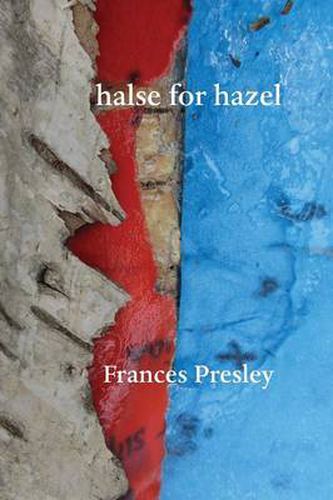Readings Newsletter
Become a Readings Member to make your shopping experience even easier.
Sign in or sign up for free!
You’re not far away from qualifying for FREE standard shipping within Australia
You’ve qualified for FREE standard shipping within Australia
The cart is loading…






This title is printed to order. This book may have been self-published. If so, we cannot guarantee the quality of the content. In the main most books will have gone through the editing process however some may not. We therefore suggest that you be aware of this before ordering this book. If in doubt check either the author or publisher’s details as we are unable to accept any returns unless they are faulty. Please contact us if you have any questions.
Halse is Exmoor dialect for hazel, as transcribed by local historian Hazel Eardley-Wilmot: a convergence of names which initiates a new poetic syntax of marginal trees and tongues. Halse for hazel has three sections, Halse, Col and Hassel: alternate and playful names for hazel, which map wide ranging geographic and linguistic areas, as well as political and environmental pressures. Halse begins with Exmoor tree names and ends with Lorna Doone, while Col moves from an irreverent Celtic tree alphabet to Atlantic woods in Scotland where hazel dominates. Hassel takes us from the devastation of Oak Change, after WWI, to the naming of hidden whitebeams in Avon Gorge. Much of Halse for hazel, like Presley’s earlier sequences, Myne and Lines of sight, is ‘blind writing’, when the eye and mind focus on the landscape rather than the page, although what we see and how we see are more at risk. The visual design of the text is shaped by the language of trees and their strange physical evolution, in dialogue with the images of Irma Irsara. The book also contains a recent collaboration with American poet and artist Julia Cohen, commissioned for Likestarlings.
$9.00 standard shipping within Australia
FREE standard shipping within Australia for orders over $100.00
Express & International shipping calculated at checkout
This title is printed to order. This book may have been self-published. If so, we cannot guarantee the quality of the content. In the main most books will have gone through the editing process however some may not. We therefore suggest that you be aware of this before ordering this book. If in doubt check either the author or publisher’s details as we are unable to accept any returns unless they are faulty. Please contact us if you have any questions.
Halse is Exmoor dialect for hazel, as transcribed by local historian Hazel Eardley-Wilmot: a convergence of names which initiates a new poetic syntax of marginal trees and tongues. Halse for hazel has three sections, Halse, Col and Hassel: alternate and playful names for hazel, which map wide ranging geographic and linguistic areas, as well as political and environmental pressures. Halse begins with Exmoor tree names and ends with Lorna Doone, while Col moves from an irreverent Celtic tree alphabet to Atlantic woods in Scotland where hazel dominates. Hassel takes us from the devastation of Oak Change, after WWI, to the naming of hidden whitebeams in Avon Gorge. Much of Halse for hazel, like Presley’s earlier sequences, Myne and Lines of sight, is ‘blind writing’, when the eye and mind focus on the landscape rather than the page, although what we see and how we see are more at risk. The visual design of the text is shaped by the language of trees and their strange physical evolution, in dialogue with the images of Irma Irsara. The book also contains a recent collaboration with American poet and artist Julia Cohen, commissioned for Likestarlings.